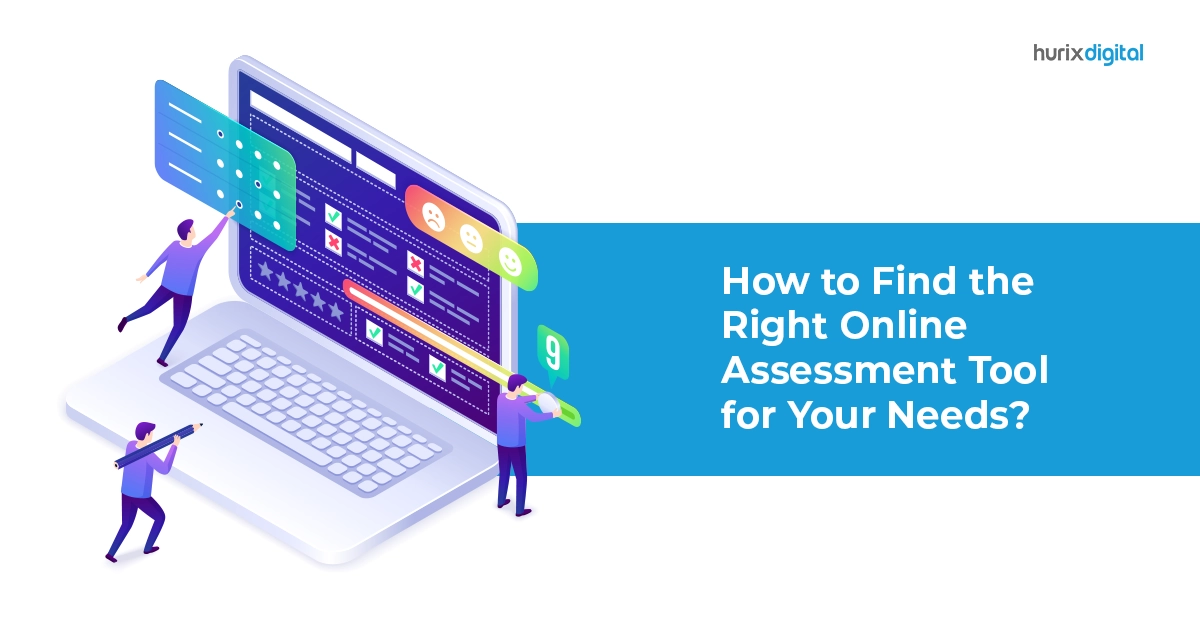
11 Trends in Online Assessment Creation Services
Summary
This article delves into the latest trends in online assessment tools for educators. It discusses personalizing tests, gamifying assessments, providing instant feedback, and automating grading.
Did you know that by 2028, the eLearning industry at a global level is expected to reach a market value of $465 billion? While the recent pandemic was the key driver behind the online learning trend, the latter is likely to continue and grow in the years to come.
Naturally, the online assessment landscape is evolving rapidly, too, with educators trying to brainstorm and devise innovative ways to evaluate students’ progress and achievements.
So, let’s explore what is trending in online assessment systems and why you should capitalize on them to transform students’ learning experiences.
Table of Contents:
- Setting Clear Goals
- Personalizing Tests
- Experimenting with Question Types
- Limiting Time for Completing Questions
- Utilizing Multimedia Elements
- Including Case Studies and Scenarios
- Gamifying the Assessment
- Providing Instant Feedback
- Automating Assessments
- Testing the Assessments
- Assessing Regularly
- Selecting the Perfect Online Assessment Tool
1. Setting Clear Goals
Both the educator and the learner should have a clear idea about the purpose of the online assessment. You should define specific objectives that make sense in terms of the course, lesson, or module and can be measured.
Learners should know what is expected of them once they complete a lesson or course. This will ensure more transparency, forge mutual trust, and lead to better outcomes. With online assessment tools, you can easily align tests with different goals.
2. Personalizing Tests
To make learning and development in students truly effective, you need to design assessments in a way that neither frustrates nor bores them. This requires you to personalize assessments as no two students learn, assimilate, and retain information at the same pace or with the same efficiency.
In other words, you can give them the option to choose the topics for testing. Adaptive testing is another trend that is catching on fast since it enables you to tweak the level of difficulty in questions based on a particular student’s capability or performance.
Also Read: 10 Best Digital Assessment Tools That Are Useful for Both Students As Well As Teachers
3. Experimenting with Question Types
Sticking to a one-question format for all students is no longer the best approach in e-learning evaluation. To ensure an inclusive environment, you need to adapt to different learning preferences and styles.
Using an advanced innovative assessment tool for teachers, you can implement various question formats, such as multiple-choice, short-answer, open-ended, game-based, and so on.
4. Limiting Time for Completing Questions
Since online assessments are not invigilated, allotting a specific time limit for answering each question can help maintain the integrity of an assessment. This is because students who haven’t studied well will not have enough time to look for answers. They have no idea where to find them.
5. Utilizing Multimedia Elements
Assessment authoring tools these days allow you to go beyond simple text and incorporate multimedia elements like animation, videos, images, quizzes, and interactive simulations while designing evaluations.
You can offer an immersive experience to learners this way, engage them easily, minimize external distractions, and help them perform better even on complex topics. Using multimedia elements is also a smart way to gauge a student’s practical knowledge and understanding.
6. Including Case Studies and Scenarios
Another effective way to test students on their practical knowledge is by including case studies and real-world scenarios in the assessment process. This can help you gauge if a student knows how to apply what they have learned in real life and how effectively they can do it.
Ideally, the scenarios need to present multiple solutions based on different perspectives so you know how the learner arrives at a certain decision. Tests involving such case studies can also be administered to groups of learners to encourage collaborative problem-solving.
7. Gamifying the Assessment
Using assessment authoring tools, you can introduce game elements in evaluations to boost interest, engagement, and motivation in learners.
Gamification can encourage students to indulge in healthy competition, sharpen their focus, and win points or badges that give them a sense of accomplishment. However, the game elements must be relevant to the objective of the assessment and not cause distraction.
8. Providing Instant Feedback
Modern online assessment systems allow you to share feedback immediately with a student after their performance. This helps them identify their strengths and weaknesses in real time and work harder on areas that require improvement.
However, you must make sure that they get a clear and complete idea about how they have performed based on correct and incorrect responses.
9. Automating Assessments
The current e-learning landscape boasts multiple levels of assessment automation, from the moment tests are created and distributed to when they are graded and analyzed. This has made assessment systems holistic, efficient, and seamless.
You can also gain complete visibility into the performance of individual students as well as a class. The fact that students can take the tests from anywhere, irrespective of their geographical locations, is also possible due to automation.
While automating the different aspects of assessments can minimize human errors, you must incorporate a personal touch wherever the need arises. For instance, though automation can handle routine tasks like grading answers to multiple-choice questions, human intervention might be preferable when it comes to assessing a student’s problem-solving or critical-thinking ability.
10. Testing the Assessments
After designing an online assessment, it is important to test its effectiveness with a small group of students before administering it to a large class. This way, you can easily identify problem areas and resolve them before a large group picks up the assessment.
Also, ask the small group of learners if they found the test interesting, how simple or complicated the questions were, and if the test seemed relevant to what they had learned. Collecting feedback can help you make necessary adjustments in the assessment.
11. Assessing Regularly
To ensure continuous learning and development, the trend is to administer online assessments regularly so you can track a student’s progress over time, instill a positive mindset in them, as well as encourage them to address their weaknesses and hone their strengths.
Also Read: AI-Enabled Assessment: Redefining Evaluation in Education
Selecting the Perfect Online Assessment Tool
While there is a wide array of online assessment tools available nowadays, what you choose will depend on your budget, objectives, resource constraints, as well as technical skills. So, ask yourself if you are trying to gauge a student’s attitudes, knowledge level, skills, or behaviors.
Consider their learning styles, interests, backgrounds, and needs. How do you intend to measure their performance and grade them? Consider the ease of implementing the tool as well and understand the planning and testing that will be required. Or, to keep it simple, contact us to learn more about the innovative assessment services offered by Hurix Digital.
Want to learn more? Contact us today!

Vice President – Content Transformation at HurixDigital, based in Chennai. With nearly 20 years in digital content, he leads large-scale transformation and accessibility initiatives. A frequent presenter (e.g., London Book Fair 2025), Gokulnath drives AI-powered publishing solutions and inclusive content strategies for global clients








